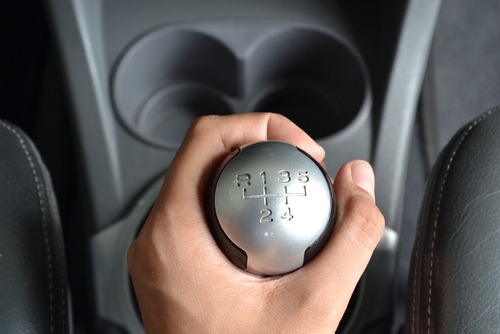

This little Honda has mastered body control, whether you’re talking about handling or ride quality. That is, compared to a segment that allows wide latitude for body roll, understeer, and general chassis apathy, the HR-V feels like a Volkswagen GTI of sorts.

On the road, the HR-V corners with a precision and balance that suggests the work was done by an engineer who cared more than the job required. Wider and stickier tires help the HR-V achieve 0.85 g of lateral grip on the skidpad, well above the Fit’s 0.78 g.

The HR-V’s ride height sits in the happy middle ground between lifeguard-chair visibility and carlike handling. At an as-tested average of 29 mpg over 550 miles of mixed driving, the HR-V also impressed us by beating its EPA combined rating by 1 mpg. We suspect that’s due in part to extra insulation padding the HR-V’s cabin, because the crossover also suffers less wind noise. The four-cylinder spins above 3000 rpm at 80 mph, but its drone is less penetrating and less irritating than that of the Fit. Whereas the Fit buzzes down the interstate, the HR-V merely hums.
2016 STICK SHIFT CARS UPGRADE
Unfortunately, the harder you drive, the more obvious it becomes that the throttle hangs, causing the revs to rise after you lift off the gas and kick in the clutch.ĭespite these gripes, the 1.8-liter four-cylinder still qualifies as an upgrade over the 1.5-liter due to its improved civility.
2016 STICK SHIFT CARS DRIVER
Bury the gas pedal and shift late, though, and the HR-V scoots around with enough pep to keep its driver awake. Our test equipment recorded a zero-to-60 time of 8.4 seconds, 0.7-second slower than a manual-equipped Fit, and a lazy throttle encourages the HR-V driver to set an even slower pace around town. The HR-V’s port-injected 1.8-liter four-cylinder makes 11 horsepower more than does the Fit’s smaller, direct-injected engine, although that won’t compensate for the extra 332 pounds it carries. The front of the cabin looks like a completely unrelated vehicle, with a row of climate vents in front of the passenger, a rippling center console, and two touch-screen panels acting as the audio head unit and the climate controls. Inside, the only blatant similarity between the HR-V and the Fit is the clever, versatile rear seats that fold to accommodate either tall or long cargo.

In midlevel EX trim like our test model, though, the stick does come along with niceties such as automatic climate control, a backup camera, LaneWatch, passive entry, and a sunroof. The factory also restricts all-wheel drive, satellite radio, navigation, and leather seats to CVT-equipped HR-Vs, so those who want to work the ratios themselves also have to make do with less. The throws are looser and the precision lacking compared with the firm, quick action that Honda has captured in other cars. We relish the control and involvement of choosing our own gears, but this particular stick shift doesn’t live up to the greatness we’ve often trumpeted in Honda vehicles.
2016 STICK SHIFT CARS MANUAL
Most HR-Vs will come with the CVT gearbox rather than the six-speed manual we drove. While the HR-V competes in the popular and growing subcompact-crossover segment, you can expect versions equipped like this specific test car to be rare. MICHAEL SIMARI The Exotic, Endangered Stick-Shift Crossover


 0 kommentar(er)
0 kommentar(er)
